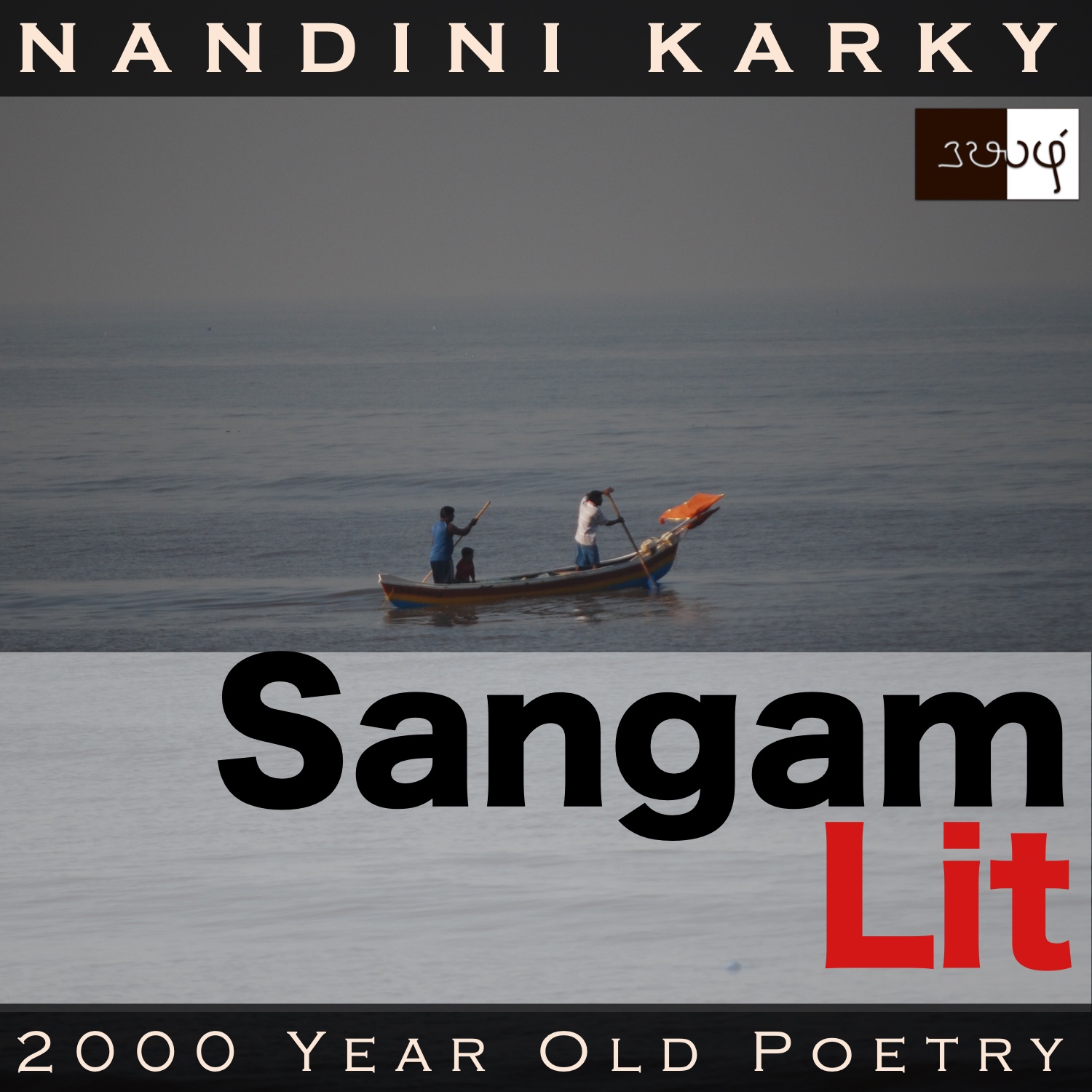Podcast: Play in new window | Download
Subscribe: Apple Podcasts | Spotify | Amazon Music | Android | iHeartRadio | TuneIn | RSS | More

In this episode, we learn of an ancient fishing method, as portrayed in Sangam Literary work, Kurunthogai 304, penned by Kanakkaayar Thathanaar. The verse is situated in the coastal regions of ‘Neythal’ and speaks in the voice of the lady to the confidante, in response to the confidante’s worry about the lady’s ability to bear with the man’s parting.
கொல்வினைப் பொலிந்த கூர் வாய் எறிஉளி
முகம் பட மடுத்த முளிவெதிர் நோன் காழ்
தாங்கு அரு நீர்ச் சுரத்து எறிந்து, வாங்கு விசைக்
கொடுந் திமிற் பரதவர் கோட்டு மீன் எறிய,
நெடுங் கரை இருந்த குறுங் கால் அன்னத்து
வெண் தோடு இரியும் வீ ததை கானல்,
கைதைஅம் தண் புனற் சேர்ப்பனொடு
செய்தனெம்மன்ற, ஓர் பகை தரு நட்பே.
All about ‘his seas and shores’, this one! The opening words ‘கொல்வினைப் பொலிந்த கூர் வாய் எறிஉளி’ meaning ‘the throwing spear with a sharp edge that shines with the intention of killing’ vividly describes a weapon. In ‘முளிவெதிர் நோன் காழ்’ meaning ‘the sturdy bamboo made of dried stalks’, we glimpse at a different part of the same weapon. To whom this belongs to, is revealed in the words ‘கொடுந் திமிற் பரதவர்’ meaning ‘fisherfolk on curved boats’. Many of us would have caught this sight in nature documentaries or in real – that sight of ‘a white flock of short legged seabirds calling aloud and rising up in the air’ as seen in the words ‘குறுங் கால் அன்னத்து வெண் தோடு இரியும்’. The phrase ‘கைதைஅம் தண் புனற் சேர்ப்பன்’ meaning ‘the pandanus trees on the shores near the cool seas of the lord’ brings before our eyes, the hero of the verse and his lush land. Ending with the words ‘ஓர் பகை தரு நட்பே’ meaning ‘a friendship that renders an enmity’, the verse intrigues our curiosity.
After making us see so many real sights and hear these sounds, the verse seems to end on a puzzling abstract note. The context reveals that the man and lady were leading a love relationship when the man parted away to gather wealth for their wedding. When he was missing for quite a few days, the confidante asks worriedly to the lady as to how she’s bearing with the separation. To the confidante, the lady says, “The sharp-edged spear meant for the task of killing is fixed to the end of a dried bamboo’s strong stalk and thrown in the heavy waterways, and then, pulled back quickly by fishermen on curving boats, as they hunt for sharks. Just then, the short-legged seabirds in the long shore, standing as a flock of white wings, cry out aloud and flutter away, near the flower-filled orchards, where grows the beautiful ‘kaithai’ trees in the land of the lord with cool waters. With him, I have indeed got into a friendship that has brought enmity to me!” With these words, the lady describes how the relationship she chose to enter with joy has now brought sorrow to her doors.
Time to explore the nuances. The lady’s focus falls on a spear tip that seems to be gleaming with the goal of killing. Moving away from that sharp end, we see how the spear has been tied to a well-dried, firm bamboo rod. After describing the object, the lady turns her focus on the action performed. She points out to how the spear is thrown into the dense waves and then quickly pulled back by fishermen in curving boats that streak through the ocean. Their hunt is successful for that spear has hit its target of a shark, and as they pull back with loud cries and gusto, near the shores, a flock of white seabirds get anxious and crying out aloud, they take to the skies. From the shores, moving further inland, we glimpse at groves, brimming with flowers, especially of the pandanus tree. Revealing all these scenes so as to describe the man’s land near the cool seas, the lady concludes with a single statement as to how her joyful friendship with him has become the enemy of her health and beauty, as these flutter away from her, like the birds in the man’s land!
Something that she never thought would bring her even a moment of pain has brought momentous suffering, the lady implies. Moving away from the lady’s emotions, let’s take in the images that expand here. The verse seems to do the task of a modern day movie crane that moves on top angle from the deep seas, where fishermen are at work, glides over the shores with the soaring birds, and into the flower-filled, Pandanus tree groves within. When I read about how a bamboo-spear combination is used here to fish, this intrigued me to learn more about this dynamic version of fishing. In my search, I found similar images of wooden rods, spears and ropes used by the natives of Kenya in Lake Turkana as well as the aborigines of Australia. Like these fishermen who have caught the fish they wanted to, I too felt elated to see how the same tool is aimed by the hand of an inland fisherman in Africa, thrown into the seas by a Tamil fisherman in the Sangam age, and pulled back by an Australian aborigine. Is this ancient object tracing the trail of human migration across the sands of time?




Share your thoughts...